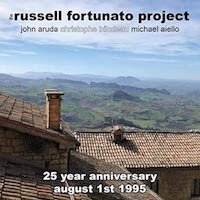Label: Intakt Records, 2020
Personnel - James Brandon Lewis: tenor saxophone; Aruán Ortiz: piano; Brad Jones: bass; Chad Taylor: drums.
Molecular is the new release of saxophonist/composer James Brandon Lewis, who hides a complex concept with reference to molecular biology in his 11 compositions. He fronts a sinewy quartet completed by excellent rhythm partners: pianist Aruán Ortiz, bassist Brad Jones and drummer Chad Taylor.
“A Lotus Speaks” articulates in 6/8 with charm, emphasizing less oblique angles and more epic lyricism expressed in a tactile form. Known as rhythmically defiant, Ortiz is the type of accompanist who likes to create atop the flames maintained by bass and drums, while the superbly skilled Lewis explores the tonal possibilities of the horn, ensuring that his sonic lexicon obtains the intended soulful heft to make things work.
“Helix” sucks us into the vortex of its short-lived theme before establishing an uptempo swinging urge at the bottom. All members of the quartet have the opportunity to stretch here, and they do it with tonally rich elements and flawless technique.
Understatedly grooving, “Molecular” shows the band probing an axial direction with a characteristic posture of those who explore unmapped terrains. The brilliant poise comes from the lush chords and single-note phrases that Ortiz includes in his piano statement. Lewis follows him with resolute yet amiable extroversions, and the piece ends with a dangling vamp.
“Cesaire” develops with an exotic polyrhythmic feel, but also inherits a dramatic brand of ebullience that comes from inside. It’s not as eccentric as “An Anguished Departed” though, where the group shows a robust enthusiasm for edgy Latin grooves. Both Ortiz and Lewis make the dust fly in their improvised shows.
“Breaking Code” is relatively straightforward when compared to other pieces on the album. The melody, right at the center, is delivered with a Coltrane-inspired devotion, but the pop/rock-ish substratum gives it a cerebral flow, whereas the gospel elements thrown in by Lewis contribute additional fervency.
The waltzing ballad “Of First Importance” disconnects from the modern vignettes “Per1” and “Per2”. The former evokes electronic undercurrents and employs a bouncy hip-hop language, the latter solidly combines Latin and avant-garde elements.
The quartet’s jazz, informed by myriad influences and a solid multi-cultural perspective, embraces both composed scenarios and controlled disarrays with the same merit.
Grade A-
Favorite Tracks:
01 - A Lotus Speaks ► 09 - Breaking Code ► 10 - An Anguished Departed










































